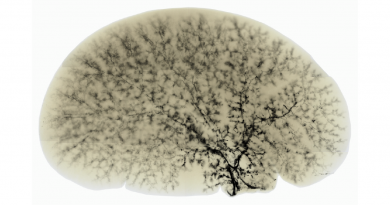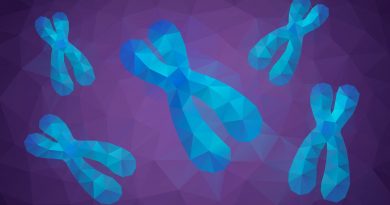Tempura finds its Notch adding lipids to Rabs

A newly recognized gene called tempura plays a critical role in the activity of Notch, a signaling pathway that determines cell fate, said researchers at Baylor College of Medicine.
In a report that appears online in the open access journal PLoS Biology, a group of Baylor College of Medicine scientists led by Drs. Wu-Lin Charng, Shinya Yamamoto, and Hugo J. Bellen, members of the Baylor Program in Developmental Biology and the Jan and Dan Duncan Neurological Research Institute at Texas Children’s Hospital, describe how they screened fruit flies exposed to a mutagen to find genes that are part of the Notch pathway.
Altered Notch signaling

When Notch signaling is altered by a mutation in a gene that affects it, cells that should become bristles or sensory hairs become neurons instead, leaving bald patches on the insects’ backs. This screen led them to identify the new gene that they dubbed “tempura” because the protein it encodes adds parts of fats or lipids to other proteins.
“This had not been studied in any organism,” said Yamamoto. “It can be found in many but not all species in the evolutionary tree. It has not been studied previously.”
“The fact that it is involved in the Notch pathway indicates an important role”, said Charng.
Embryonic growth
During the growth of embryos, cells must assume their proper roles in the tissues of an organism. To do this, they must communicate. Notch plays a crucial role in this in regards to cell fate determination, allowing new cells to take on different roles from their parents.
In this case, neuron precursors called neuroblasts signal neighboring cells in a way that prevents them from also becoming neuroblasts. A protein called Delta found on the surface of the neuroblast is a ligand for the Notch receptor protein, allowing it to influence nearby cells. Whenever a neuroblast divides, only one of its daughters becomes a neuroblast. The other assumes a different role in the surrounding tissue.
Similar to Scabrous mutations
The authors noted that fruit flies with mutations in tempura resemble those with mutations in another gene called scabrous. The protein Scabrous enhances Notch signaling in surrounding cells. The scientists found that cells with mutations in tempura made plenty of Scabrous but could not secrete it. Instead, the protein built up within the cells, affecting their ability to function.

Positing that mutations in tempura might affect vesicle trafficking (the system by which proteins are moved to their appropriate positions within the cell), Charng, Yamamoto and others discovered that bristles in flies with mutations in tempura also have a problem in bringing Delta, the critical Notch ligand, to the correct destination.
They found that cells with mutated tempura allow Scabrous and Delta to build up in places in the cell where they cannot accomplish their purposes. By further studying the biochemical properties of Tempura, they document that it functions as a subunit of a multiprotein complex that adds lipids to members of the Rab protein family, key regulators of vesicle trafficking system. They determine that Rab1 and Rab11 are severely affected in tempura mutants and are direct targets of this Tempura complex. While Rab11 was already known to be a player in Notch signaling, Rab1 had not been linked to it before, said Yamamoto.
“Further studies on Tempura in flies and humans may have a broader impact beyond Notch signaling” said Charng. Indeed, Rab proteins are tightly regulated at many steps during development, and misregulation of Rabs have been seen in different disease states. The discovery revealed an unanticipated additional regulatory step of Rab function that will likely spark the interest of many researchers in both basic and biomedical research.
Others who took part in this work include Manish Jaiswal, Vafa Bayat, Bo Xiong, Ke Zhang, Hector Sandoval, Gabriela David, Stephen Gibbs, Hsiang-Chih Lu, Kuchuan Chen and Nikos Giagtzoglou, all of Baylor College of Medicine.
Funding for this work came from the NIH (5P30HD024064, 1RC4GM096355-01, 5T32HD055200, 5R01GM067858), Taiwan Merit Scholarships Program sponsored by the National Science Council (Grant NSC-095-SAF-I-564-015-TMS), the Nakajima Foundation, Jan and Dan Duncan Neurological Research Institute at Texas Children’s Hospital, the Edward and Josephine Hudson Scholarship Fund, the Houston Laboratory and Population Science Training Program in Gene-Environment Interaction from the Burroughs Wellcome Fund (Grant No. 1008200), the Research Education and Career Horizon Institutional Research and Academic Career Development Award Fellowship (5K12GM084897) and the Howard Hughes Medical Institute. — Ruth SoRelle, M.P.H.



